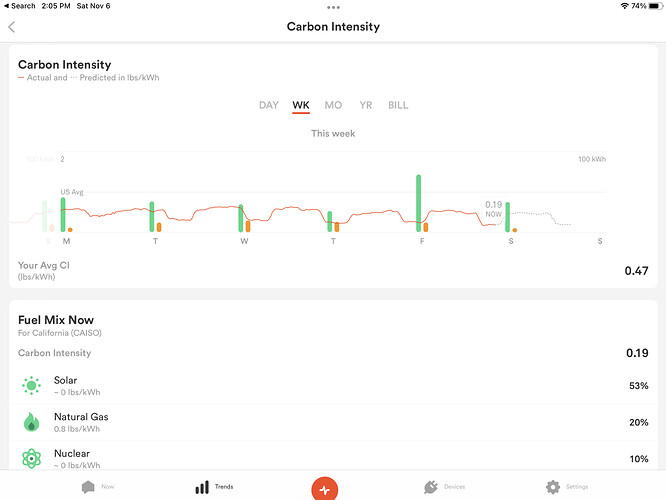Hi all. My setup: I recently got a solar system (16KW nominal) for my home and got the Sense with Solar setup as part of the installation. The inverters are at the array, and 240v comes back to the house and is connected to the utility incoming 240v service – they called it grid-intertie. The inverters sync with the utility grid, so I can’t run on just solar with the grid being present (no batteries or other power conversion boxes are present). Sensors are on the incoming solar lines and the incoming utility lines and the Sense box is powered by one of the 240v breakers with a 3rd set of sensors. My WA state utility meter is a net meter, with separate totals for kWh used from the utility and generated kWh returned to the grid. We don’t have Time of Use in WA state, and my utility will give me a 1 kWh credit for each kWh produced over what I consume that I will be used at other times (though I’ve never had a case where I’ve generated more than consumed in a day). My house is all electric, 2 water heaters, electric furnace/stove/oven/dryer, and I charge an EV 1-2 times per week – yeah I know this is a tall order, especially in western WA.
During the night (when no solar generation), there’s always electricity being used (Always On, electric water heater, electric furnace, etc.). Then, there are electric loads that have flexibility in scheduling during the day (dishwasher, washing machine, electric dryer, etc.). My question is: Are there advantages to trying to schedule those flexible loads for the parts of the day when there will be the most solar generation? The advantages that I see are: 1) Satisfaction of making use of the power generated first so it never needs to go through the meter, 2) Preventing needless accounting for power in/out by the meter. Any other advantages that you can think of?
Thanks,
Mark
